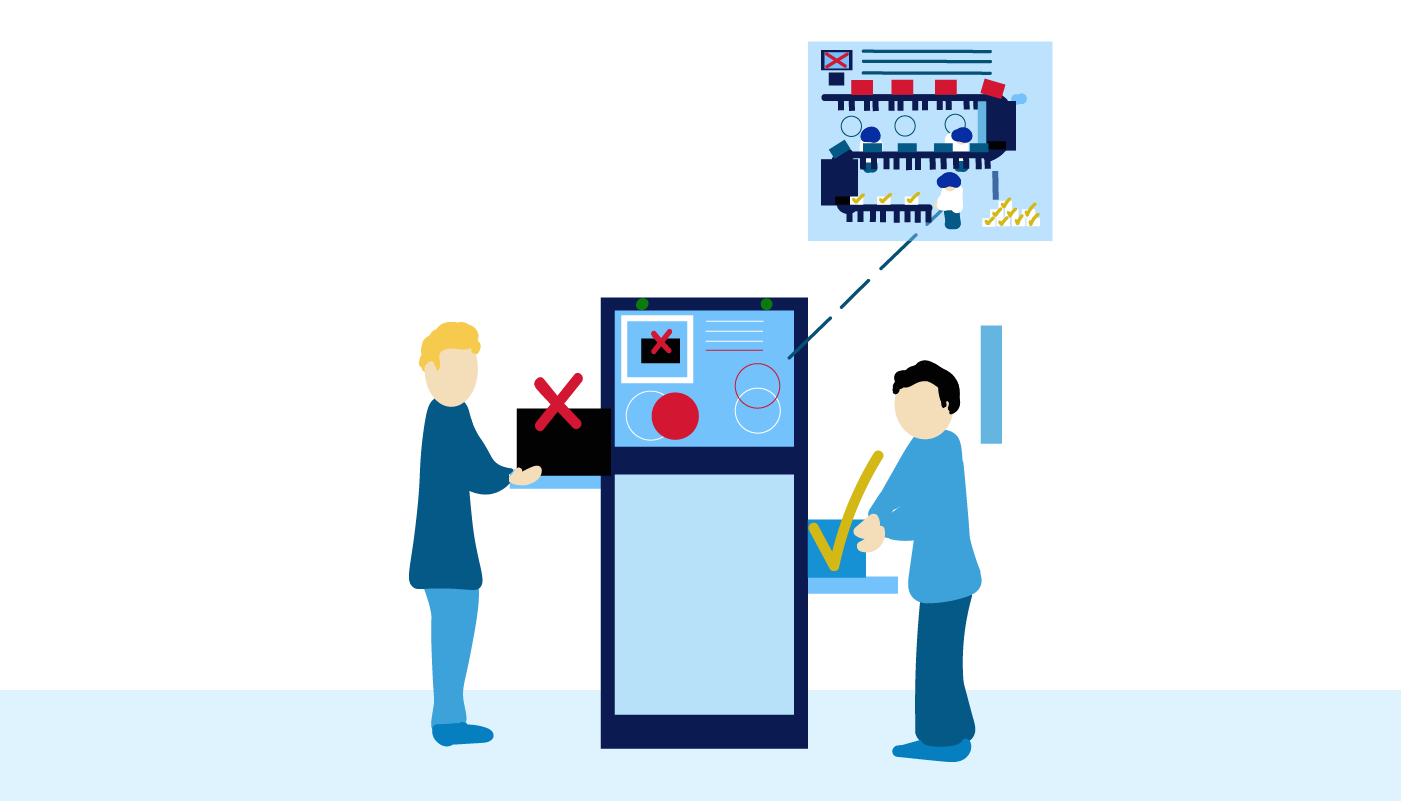QA testing is an essential step that cannot be omitted if you want to deliver a top-notch software. This process helps you detect what inefficiencies your product has and make sure it is of high quality before you bring it to the market. The choice of the testing method (manual and automated) depends on numerous factors like budget, deadline, project requirements, and so on.
In our article, you’ll find out the key differences between manual and automated testing. And you can decide which one of them fits better for your business goals. Speed up to read!
Contents
- What is Manual Testing?
- What is Automated Testing?
- The Key Differences Between Manual and Automated Testing
- A Recap: Manual or Automated Testing – What is Better?
What is Manual Testing?

With manual testing, you can build a highly intuitive app that your users will love because this QA method focuses primarily on UI/UX.
It’s a step-by-step process of executing test cases by QA specialists to find bugs, errors, etc. without setting up an automatic program.
Despite a continuous buzz around the automated testing, manual one is still important. Particularly, mobile devices and wearables do require manual testing to check what bottlenecks they might have in our daily lives. Let’s describe one real-life situation below.
Imagine that you played ‘Candy Crush Saga’ and had forgotten to switch it off before putting your phone in a bag. But what if a game might be untapped unintentionally? Only by applying manual testing techniques, you can find out what you should do to prevent a situation like this.
Types of Manual Testing
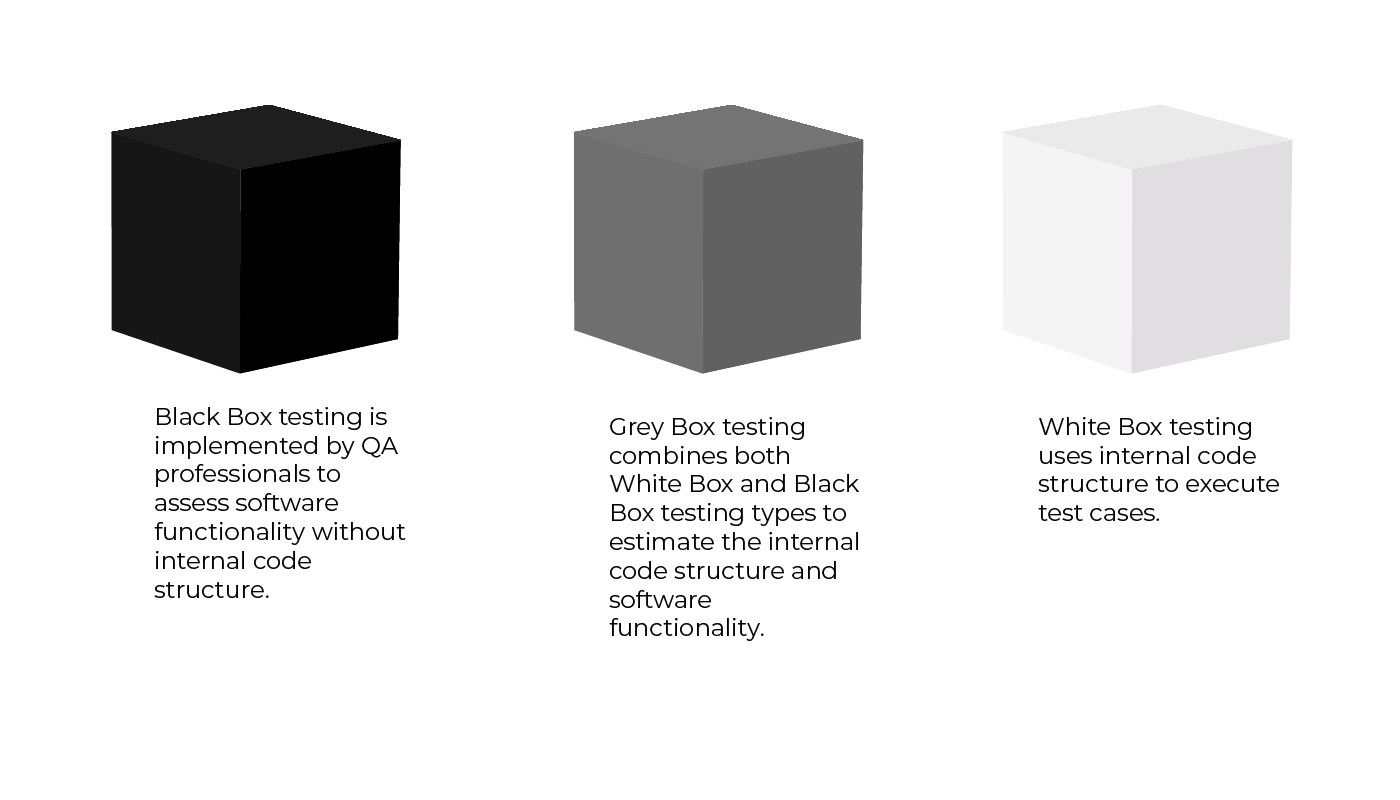
There are three common methods used in Quality Assurance manual testing to deliver high-quality application:
- Black Box testing is implemented by QA professionals to assess software functionality without internal code structure;
- White Box testing uses internal code structure to execute test cases;
- Grey Box testing combines both White Box and Black Box testing types to estimate the internal code structure and software functionality.
The Main Stages of Manual Testing
There are three essential stages in manual testing that needs to be carried out before the product is released:
- Unit testing intends to check tiny software components where each of them has their own inputs and a single output;
- Integration testing is implemented when we want to test the interaction of several units;
- Acceptance testing assesses whether a software system met testing goals.
When Should We Use Manual Testing?
It is a rule of thumb among QA professionals to conduct manual testing processes when the automated one is hard to achieve.
So, when does manual testing need to be used instead of an automated one? Here are a few cases to consider:
UI Compatibility
Hardly can automated testing ensure what color type, images, or fonts are appropriate for creating eye-catching user interfaces. With manual testing, it’s easier to check how all the above-mentioned elements look like.
Hardware-Related Tests
Manual testing helps QA professionals write scripts for checking quality of printed images, screens, touchpads, etc. With automated testing, it’s hard to complete this task as we don’t know how many times we should test hardware.
Usability Testing
Usability is all about creating highly interactive and engaging user experiences. That is why QA professionals use manual testing to check software functionalities and various scenarios in user behavior.
Short-Term Projects
Sometimes automated testing requires a lot of resources and effort. When you want to check functionality of your landing page, manual testing will do it faster than the automated one. There is no need to set up additional software that might be quite a resource-consuming process. In this case, manual testing can be a good option to deliver a high-quality product in strict deadlines.
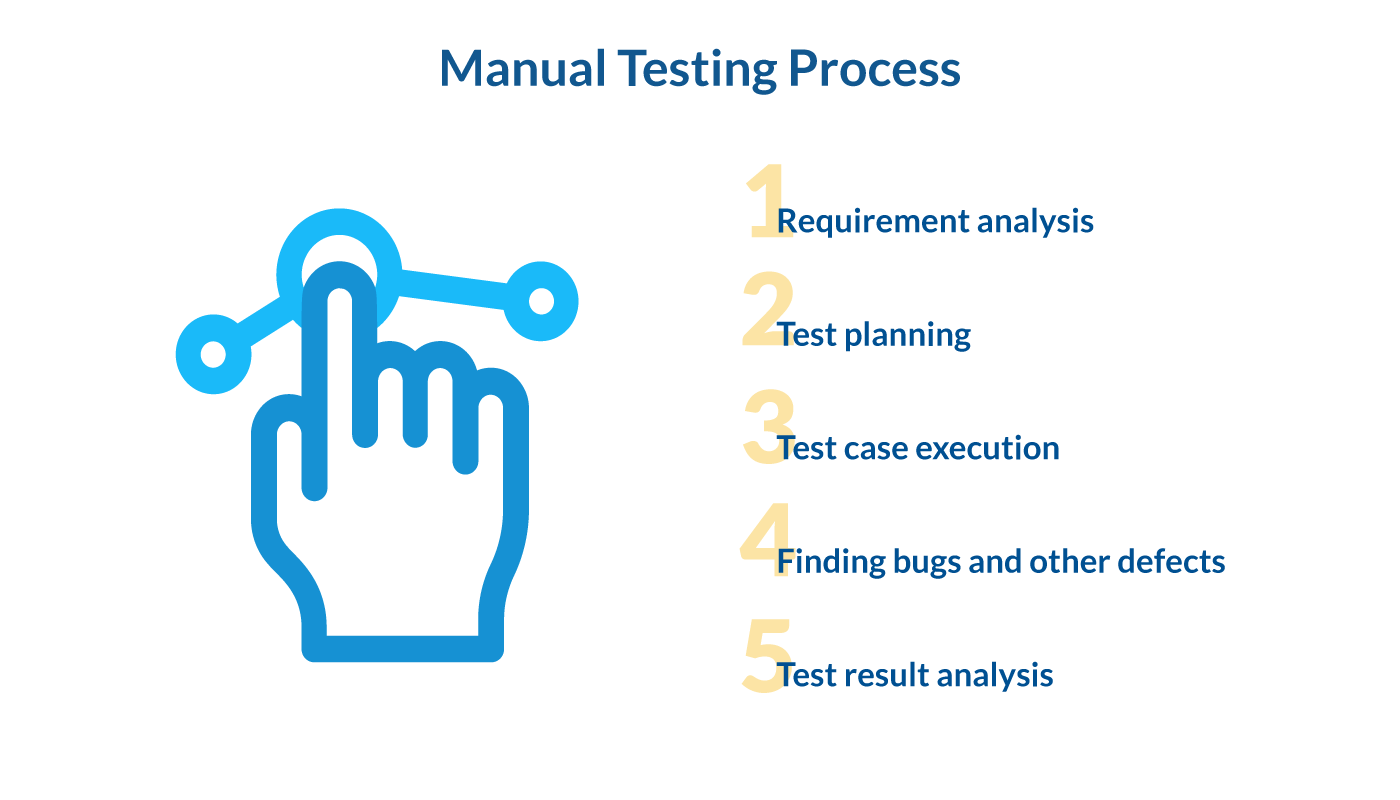
Advantages and Disadvantages of Manual Testing
Manual testing is not a one-size-fits-all solution in all cases as it has both pitfalls and benefits. So, let’s lead you to a better understanding of them!
Pros:
- The cost of manual testing is lower compared to an automated one for small testing projects;
- You can evaluate UI components (color, size, button length etc.) on the go;
- Manual testing doesn’t require programming skills, but hands-on experience is a must;
- Manual testers can assess users’ behavior when they interact with the software;
- Minor changes to software like a button type or ID modifications are better to be done with manual testing.
Cons:
- It’s difficult to test software performance manually;
- Manual testing is time-consuming in executing multiple regression tests;
- There is a high risk of human errors.
What is Automated Testing?

A fast software testing process and clear outcomes are the first things that come to our minds when we refer to automated testing. So, what’s exactly automation testing?
It’s a software testing method that compares expected and actual results of test cases with the help of special automation testing tools (Silk Test, Telerik, and others).
What is also great about this testing process is that QA professionals can automate tests without any manual work.
That is why the statement ‘do less, perform more’ clearly describes what automated testing is about.
Types of Automated Testing
There are several types of automation testing that you can use in checking your software:
- Unit testing that is used to spot bugs and inefficiencies related to software functions and methods;
- API (Application Programming Interface) testing checks app’s compliance, security, and functionality;
- GUI (Graphical User Interface) automated tests user interfaces and what users are going to do with your application;
- Automated regression testing is implemented to analyze changes applied to software

The Key Stages of Automated Testing
All you need to know about the automated testing process is that it’s all about feasibility. The feasibility of test execution and analysis – this is what we mean when we talk about the automated testing process. To execute an automated test case, you should consider the following steps:
- Define your goals and create your strategy in automation testing;
- Choose automation testing tools to execute a test task like Selenium, Egg Plant, etc.;
- Set up test environment;
- Develop test scripts on the basis of testing requirements;
- Test execution and result analysis.
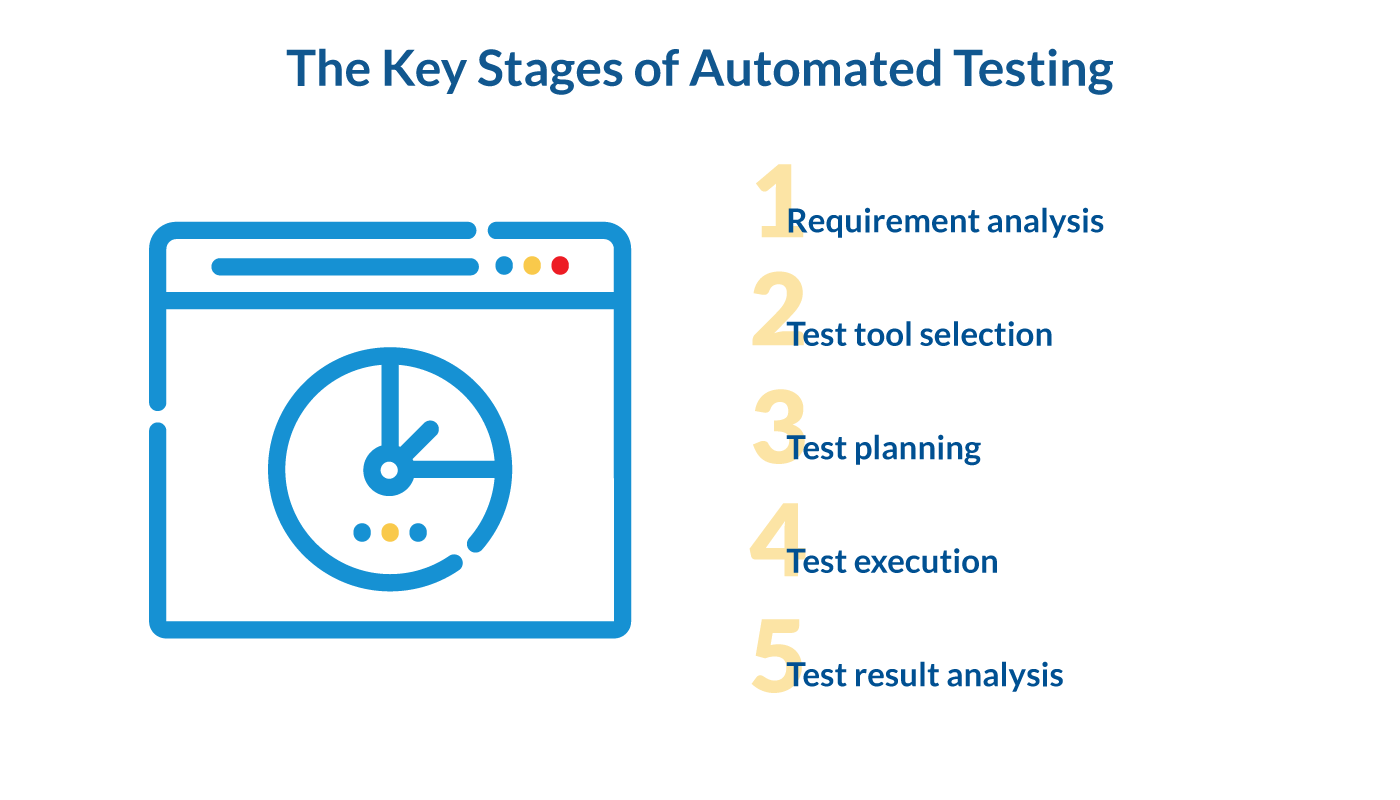
When Should We Use Automated Testing?
The answer to this question is obvious. We need automated testing when a manual one can’t handle software test cases referred to software performance and loading. But there are some situations when automated tests are necessary:
- You want to optimize speed and efficiency of your application;
- You strive to get a high-quality product;
- You should execute repetitive test cases several times;
- You need to test app functionality with numerous data sets;
- You run regression, smoke or other test methods where every defect in software must be checked.
Advantages and Disadvantages of Automated Testing
Despite firm belief that automated testing is one of the most effective ways to test software, there is a fly in the ointment, of course. Thus, let’s have a closer look at what benefits and drawbacks automated testing has.
Pros:
- Fast test execution that can be launched automatically;
- Fewer human mistakes in running a test case;
- Good for repetitive tests that should be executed several times;
- All automated tests and scripts are recorded;
- It is resource-efficient to complete test cases with several databases.
Cons:
- Automation instruments are usually expensive;
- It is ineffective in testing user experience in applications;
- Coding knowledge and experience are a must.
The Key Differences Between Manual and Automated Testing
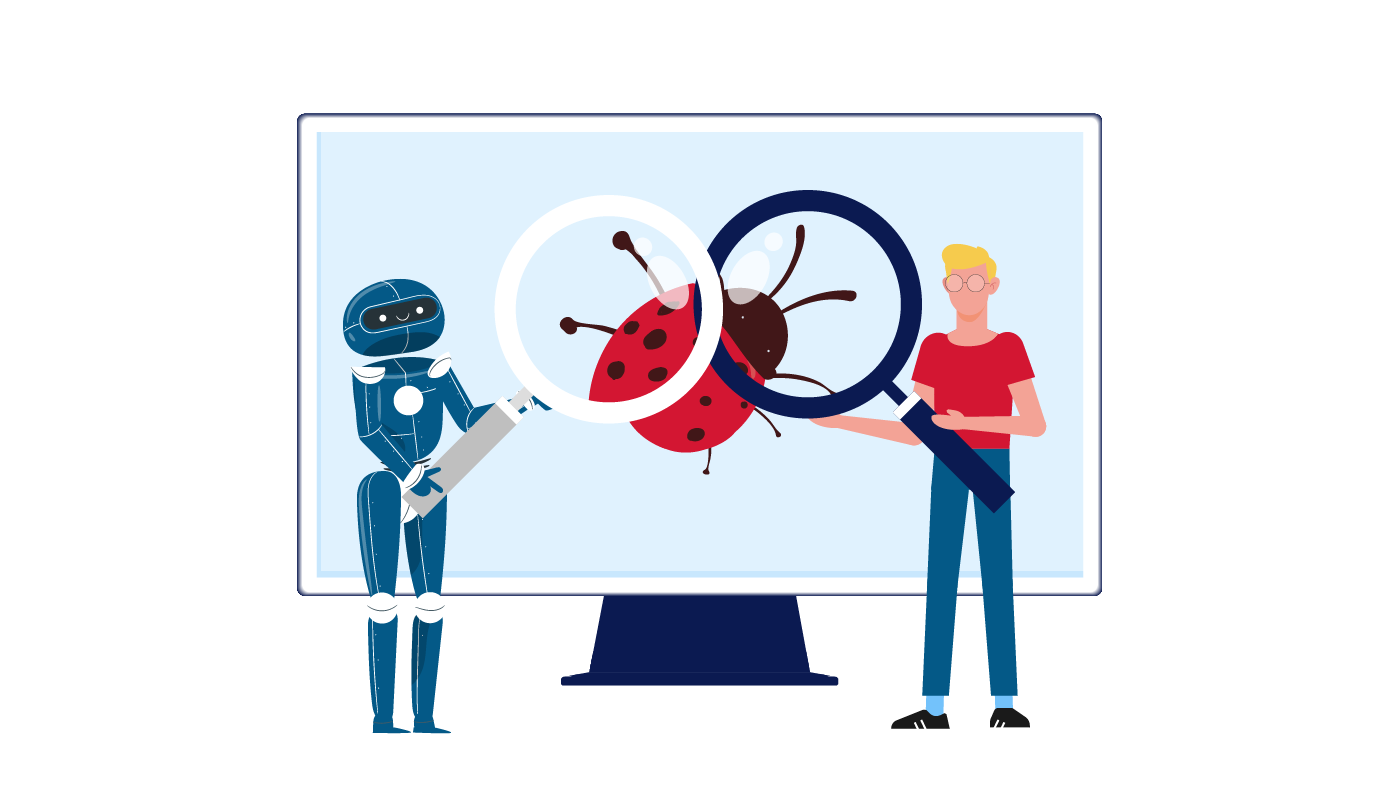
Both manual and automated testing are used in various testing methods like functional, load, integration, system, performance, and so on. But some of them are more suitable for manual testing, whilst the others can be done through automation. To explain the main differences between manual and automated testing, we’ve handpicked several scenarios where each of these test types are appropriate.
Manual testing is commonly used when:
- You have a short-term project with a low budget;
- You need to complete exploratory testing;
- You are going to run ad-hoc testing, which is usually unplanned, and gathering testing insights are important in this process;
- You should test app usability and measure how valuable the user experience is for your end users.
Automation testing is suitable when:
- You know a specific number of regression tests for your project;
- You should test server models and web servers in load and stress testing;
- You have a big project where it’s essential to test several software functionalities;
- You need to run several regression tests;
- You run performance testing to check software quality attributes like scalability, reliability, speed, etc.
A Recap: Manual or Automated Testing – What is Better?
The answer is – they are both great! That said, we can’t rely on a single method in a testing software process. Both manual and automated testing are effective when it comes to spotting bugs and software vulnerabilities.
In our article, we grasped what methods, stages, and use cases, pros and cons manual and automated testing have. The core decision about choosing one of these testing methods depends on your goals and preferences. Are you still hesitant which company to choose for software testing services? Reach out to LITSLINK for manual and automated testing services to solve your software problems at ease!

